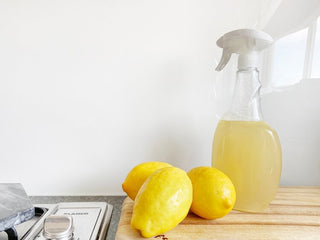So you’ve just bought a hemp or natural fabric shower curtain and don’t know how to take care of it? The look of your bathroom isn’t complete without the look of the right shower curtain. Over time this beautiful centrepiece can take a serious beating. Shower curtains are exposed to soap scum, dirt and grime on a daily basis. It’s no wonder that they start to look dingy and grow mould, but you can take care of this problem is just a few steps.
Shower curtains made of untreated hemp or cotton canvas do a great job at stopping water from spraying outside the shower. They work like a wick, channeling water downwards through the cloth into the tub. No liner needed. A natural fibre will last for years with proper care. Fabric is especially vulnerable to mould and mildew because it can easily retain moisture. When a curtain remains wet and never completely dries, mould and mildew set in, even hemp which is naturally mould resistant. However it is possible to control mildew naturally.
Here are a few tips for keeping your hemp shower curtains fresh and clean.
ALLOW CURTAIN TO DRY COMPLETELY BETWEEN SHOWERS
After your shower ensure your folding and pushing out all the excess water and spreading your shower curtain open wide and hanging it outside of the tub to dry. (Please try not to twist and wring out the water as that causes damage to the fabric and may distort and stretch the fabric)
Reducing humidity in your bathroom by opening a window or running the overhead fan can also help with drying.
WASH CURTAIN ON A REGULAR BASIS (every 2-3 weeks)
Use one of the methods below to wash the mildew build up once a month.
Baking Soda and VinegarMake a paste of baking soda and water, rub it into any remaining mould and repeat the first two steps. Hang the fabric curtain in your shower to dry or in the sun, if possible. Iron it, if necessary, when the fabric is completely dry.
Oxygen BleachGo outside or on a flat surface, lay the curtain on the ground and brush away as much of the mould as you can. Fill a tub with 2 litres of hot water. Add 4 tablespoons of non-chlorine bleach and the shower curtain. Let it soak for an hour.
Put the curtain rings and brush in the tub to kill any mould spores they may have picked up. Remove the curtain from the tub, fold it and gently press out the bleach-infused water. Shake, and rinse in a tub of fresh, warm water. Remove and fold again to remove the water. Do not twist to wring it out as the fabric will wrinkle. Hang in the sun, if possible, or return it to your shower to hang dry.
Hydrogen Peroxide and BoraxScrub the fabric with a soft brush to remove the mould. Work gently to prevent damage to the fabric. Rinse in warm water and check for remaining mould. Make a paste of equal parts borax and water if the stain persists. Apply it to the mould and rub gently with the brush. Rinse and let dry. Wash the brush in hot water to kill the mould spores.
Lemon and Salt (only with light coloured/white fabrics)ROTATE YOUR CURTAIN
The best plan in homes prone to mould issues is to have two curtains and alternate them. Take one down, wash it and hang dry in the sun while the other curtain is hanging in the shower. Rotate the curtains this way on a monthly basis.


